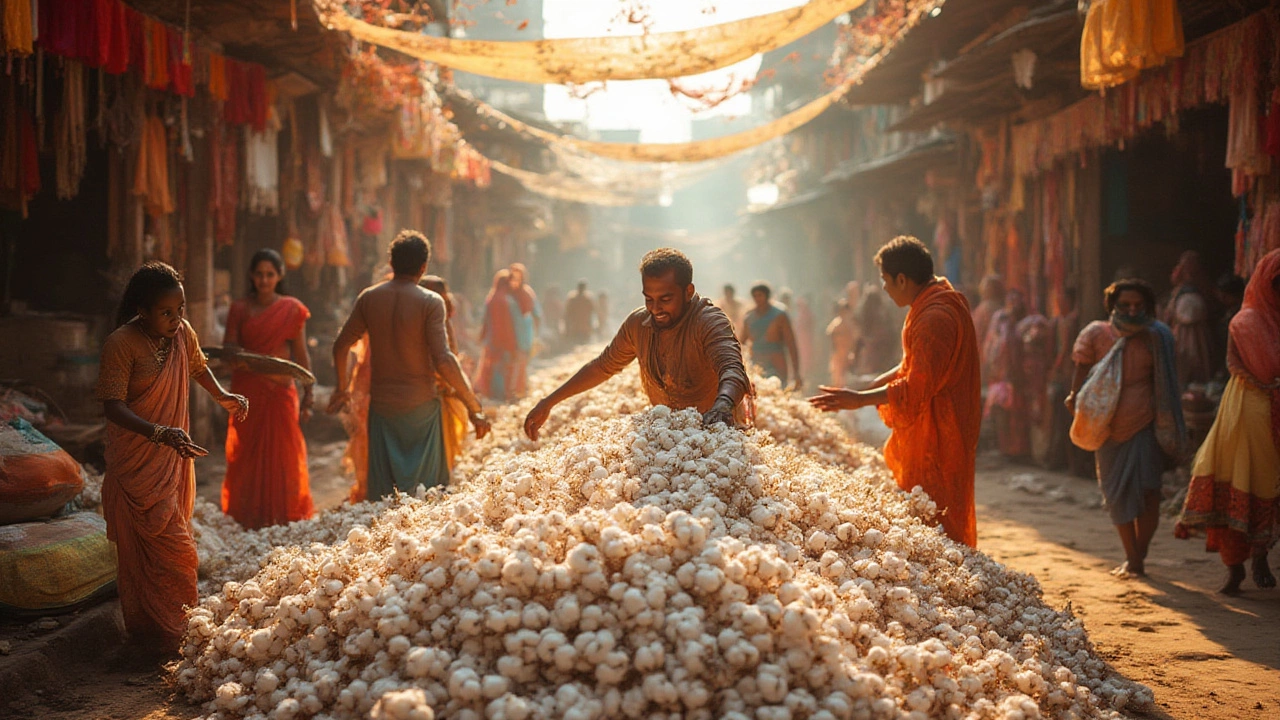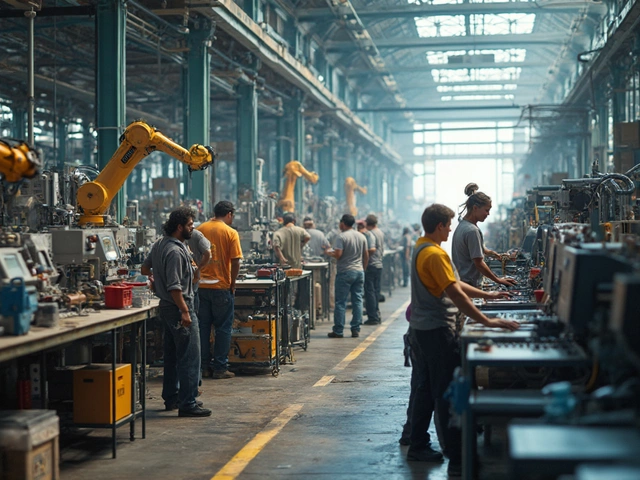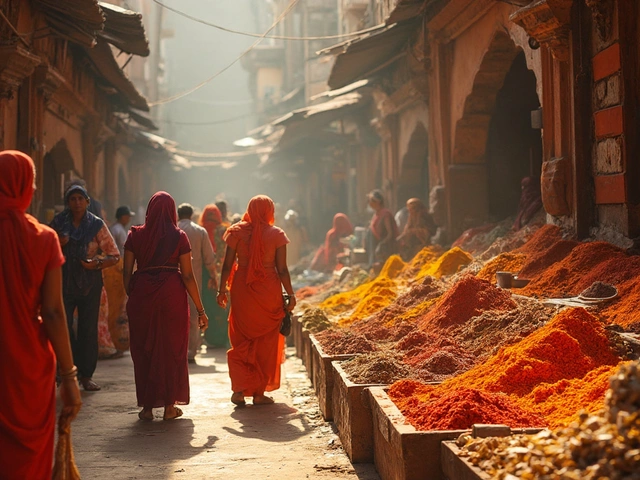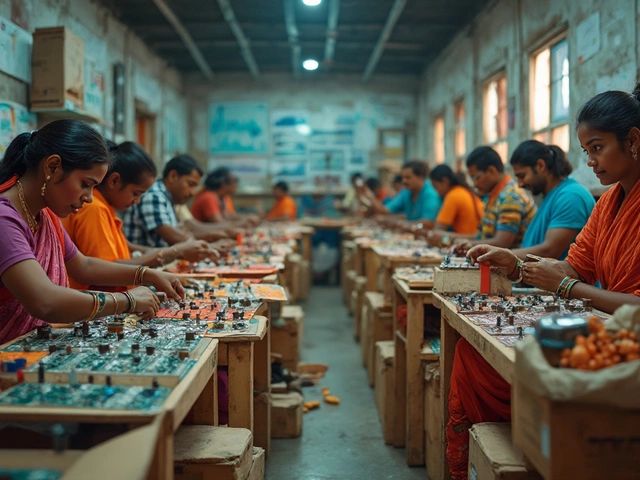Ask anyone who keeps the textile world spinning, and you'll hear the same answer: 'the queen of textile.' It's a phrase that gets tossed around in factory tours, history books, and trade PR, but most folks never stop to wonder who—or what—this queen actually is. Spoiler: she’s not royalty in a tiara, sash, and velvet. Instead, her throne is in fields, factories, and wardrobes all over the world. This isn’t just trivia for your next pub quiz—it’s a tale that reaches into how we dress, how economies grow, and where your bed sheets actually start out life. Let’s unravel it.
The Meaning Behind the Title: Who Is Called the Queen of Textile?
You might be expecting a person or a single company, but the 'queen of textile' is actually cotton. Yes—the plant. Cotton has long reigned supreme as the top natural fiber used in textile manufacturing. For centuries, it’s covered everything from kings to kitchen rags. Why this extravagant nickname? Unlike wool, silk, or synthetics, cotton’s popularity isn’t just about comfort: it’s about accessibility, adaptability, and sheer scale.
Historically, India wore the crown as the motherland of cotton, spinning it into cloth well before most of Europe even figured out how to weave. As textile industries sprouted during the Industrial Revolution in England, cotton kept pace, weaving its way through spinning jennies and power looms. By the time Queen Victoria’s steamboats were dropping anchor globally, British mills churned out miles of cotton fabric every day—beating silk and flax hands down as the fabric of choice. It was cheap, durable, and could take vibrant dye, making cotton easy to sell to everyone from miners to monarchs.
Even today, cotton makes up roughly 24% of the world’s fiber use and feeds into a textile industry valued at trillions of dollars. Its rise wasn’t just about fashion—it’s tied deeply to economics, technology, colonial history, and even major human rights issues. The title 'queen of textile' reflects both its dominance and the fact that other fibers just haven’t knocked it off the throne, no matter how slick or expensive they get.
For anyone curious if the title has shifted, rest easy—while new tech brings in bamboo, Tencel, and recycled synthetics, none have the same epic sweep of history or the millions of jobs, farms, and factories associated with cotton. Even denim’s cool edge or polyester’s practicality can’t touch the deeply rooted power of the humble cotton boll.
Cotton’s Journey: From Ancient Roots to Modern Industry
Dig into cotton’s past, and you’ll find it in the hot, sticky soils of the Indus Valley, sprouting in dusty Egyptian fields, and picked on plantations across America’s Deep South. Indian artisans were spinning cotton cloth as far back as 3000 BC, long before Cleopatra or the Roman emperors ever felt it near their skin. Those early weavers knew how to card, dye, and spin—skills that didn’t reach European shores for centuries.
Fast-forward to the 18th and 19th centuries, and cotton becomes the backbone of Britain’s industrial might. Giant mills in Manchester, famously called 'Cottonopolis', turned raw bolls into endless bolts of calico, muslin, and chintz, much of it shipped abroad through the empire’s trade networks. Innovative gadgets like the spinning jenny, water frame, and cotton gin turbocharged production—and they did it on the back of slave labor in the United States and British-controlled plantations in India. Cotton’s rise to the throne isn’t just a story of profit, but one intertwined with struggle, injustice, and revolt, including India’s independence movement and the U.S. Civil War.
Today, the epicenter has shifted again. China, the United States, India, and Brazil lead the world in both raw cotton production and textile exports. In Bangladesh and Vietnam, massive factories cut, sew, and package cotton into budget fashion that shows up everywhere from fast-fashion boutiques in London to dollar stores in Chicago. The number of jobs cotton supports is staggering—over 100 million people globally depend on the cotton industry for their livelihoods.
And the science behind growing and refining cotton keeps evolving. Genetically modified (GM) cotton now yields better crops with less pesticide. Cotton marriages with high-tech spinning machines and AI-powered quality control are standard in top mills. That means your average cotton tee, which once took months to hit shelves, now zooms from farm to fitting room in a matter of weeks.
This ancient plant isn’t stuck in the past. The latest research explores ultra-soft weaves for medical bandages, fire-resistant uniforms for firefighters, and even conductive yarns that work in wearable tech. Every piece of innovation cements cotton’s reign, but also comes with questions: How much water does it gulp? Is it sustainable? Cotton’s future as queen depends on new answers to old problems.
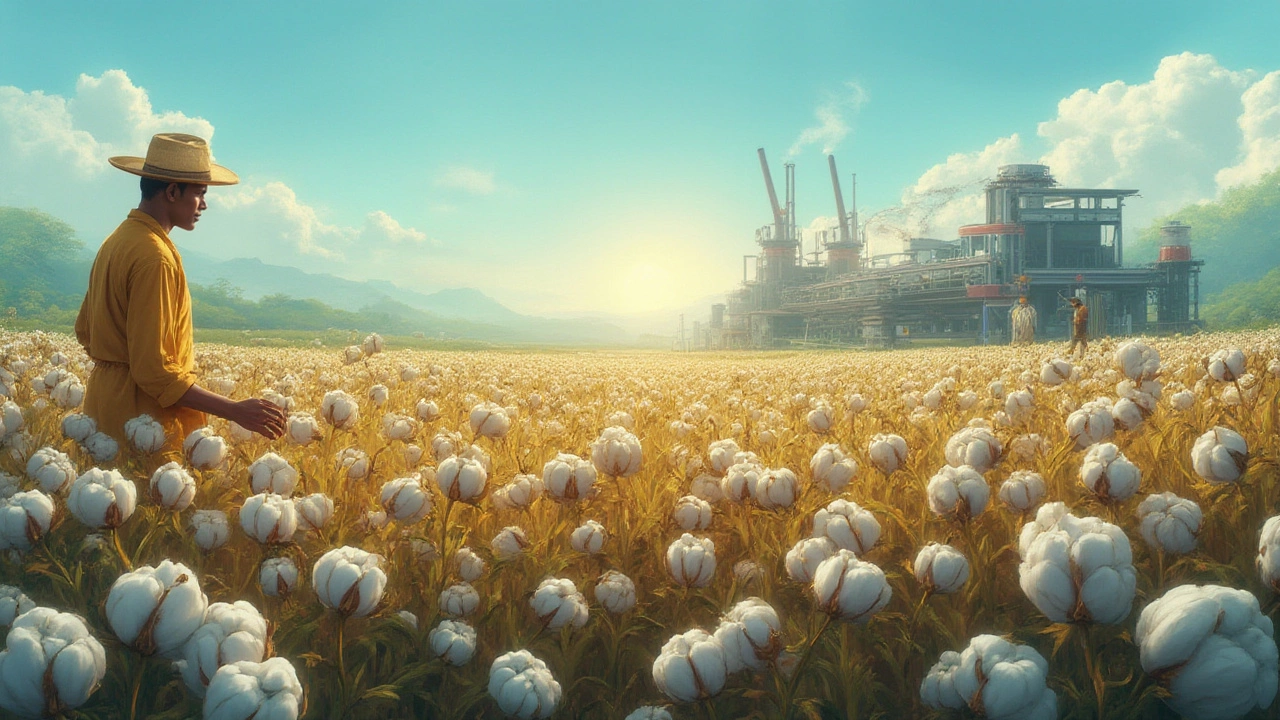
How Cotton Wears the Crown: Properties, Varieties, and Uses
Why cotton, not silk or polyester? The answer comes down to a combo that’s hard to beat. Cotton fibers are soft, strong, absorbent, and easy to spin. Take a closer look at a cotton fiber under a microscope, and you’ll spot its unique spiral structure. That makes it both strong and elastic—ideal for anything from T-shirts to bed linens. Cotton also soaks up sweat, making it a top pick for everything from gym socks to luxury hotel towels. Try wearing a plastic shirt on a sunny summer’s day, and you’ll understand why cotton’s breathability matters.
Let’s talk types. Not all cotton is created equal. Upland cotton is by far the most common, making up over 90% of global output. Pima and Egyptian cotton boast longer, silkier fibers, which means they’re pricier and often turn up in high-end sheets or ultra-soft tees. There’s also organic cotton, grown without artificial pesticides and fertilizers, which appeals to environmentally conscious brands and buyers. Some boutique farms even resurrect wild or heritage cottons for something a bit different—think deep-coloured or naturally patterned yarn.
Uses? Where do you start. Jeans, shirts, undies, curtains, upholstery, medical gauze, cotton buds—if you can stitch it, you’ll find a cotton version somewhere. The lint that gets swept off machines? It often heads straight into making paper money (including pound notes back in the day), industrial threads and even artist-grade canvases. In fact, about 95% of all textile uses for natural fibers are accounted for by cotton alone. That’s as close to a monopoly as any plant can get.
Of course, cotton’s royal status comes with baggage. Cotton farming is thirsty work—one kilo of cotton can gobble up more than 10,000 liters of water if irrigation is used. Pesticide use presents challenges, though a huge shift toward organic and integrated pest management is underway. New standards around 'Better Cotton' and eco-labels are changing how farmers, brands, and shoppers think about their clothes. Fancy a tip? If you want something comfy and good for the planet, check labels for organic or Fairtrade cotton. It’s not a silver bullet, but it means producers followed stricter social and environmental standards.
Cultural and Economic Impact: Why Cotton Remains the Textile Queen
The story of cotton isn’t just found in figures or factories. It’s woven into art, language, music, and even politics. Mahatma Gandhi’s spinning of the charkha (a simple spinning wheel) became a symbol of resistance against British rule and industrial exploitation. In America, cotton drove the economy of the South—and makes an appearance in blues, folk songs, and the tough conversations about race and history.
Econo-wise, cotton’s reach is still astonishing. The International Cotton Advisory Committee puts the total global trade at over 150 million bales every year, valued well into the tens of billions of dollars. Your favourite Fast Fashion retailer? They probably place cotton orders by the tens of tons. High street shops in Birmingham and vintage boutiques in Camden—at least one of them is selling cotton on any given day.
Country to country, cotton influences GDP, employment, and even migration. The boom in Bangladesh’s cotton garment industry over the past two decades lifted millions out of extreme poverty. In the U.S. or Australia, high-tech cotton farming means bigger yields and fewer hands picking the crop, but it’s still a lynchpin for rural economies. On the flip side, a bad cotton harvest can pinch budgets, spark protest, or even tip local economies into crisis mode.
Cotton lingers in pop culture as well. 'Cotton picking' crops up in classic films and old sayings. Designers rave about Egyptian cotton for bed sheets, and pop stars show up in high-profile campaigns for eco-friendly cotton denim. This humble fiber pops up everywhere, often without you realizing.
Got a tip for spotting quality? Hold your shirt or sheets up to the light—tight, even weaves with no thin patches mean better-quality cotton, which lasts longer and feels softer. And don’t be fooled by labels that shout about 'Egyptian cotton'—stick with trusted brands if you’re aiming for the genuine stuff. The industry has its share of copycats, just like any royal court.
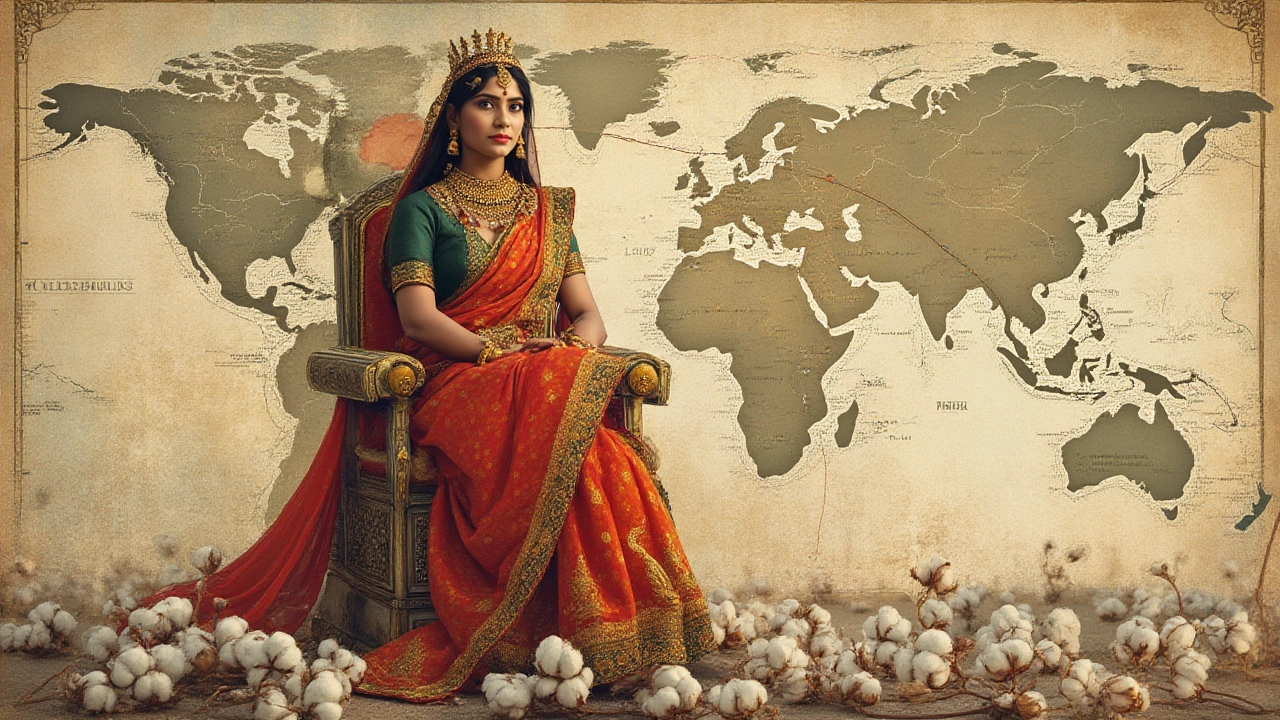
The Future: Innovations, Challenges, and Cotton’s Continuing Reign
So, is cotton’s crown safe, or will some upstart steal the title of queen of textile? It’s not that simple. While new fibers—think bamboo viscose, recycled polyester, or even hemp—offer advantages in sustainability and cutting-edge tech, none match cotton's sheer versatility, heritage, and economic heft. Cotton’s soft feel, strength, and ease of care keep it top dog in billions of homes and wardrobes worldwide.
Yet, the industry isn’t resting easy. Environmental challenges—like climate change, water scarcity, and chemical run-off—are pressuring farmers and brands to rethink business as usual. Look for terms like 'regenerative cotton', water-efficient drip irrigation, and pest-resistant GM varieties. Companies flood the market with new 'eco' lines, making transparency and traceability more important than ever for genuine change. Expect to see cotton-powered smart textiles soon, with sensors for biometric feedback in sportswear and even medical garments.
And the human side? Worker welfare gets more spotlight every year. From child labor issues in Central Asia to poor factory conditions in Asia, the industry faces pressure for better wages and workplace rights. Brands that ignore this—or fudge their labels—face angry social media call-outs and even real loss of sales.
If you’re reading this in Birmingham, odds are good you’ve got cotton on your skin right now. The future might bring more sustainable supply chains and even cooler tech uses, but that everyday comfort isn’t going anywhere fast. Some folk say linen could make a comeback, or that polyester’s dominance in fast fashion could bump cotton down a notch. But after thousands of years, it’s clear: the queen of textile still wears her crown, even if she has to share the spot with some new arrivals at court.

